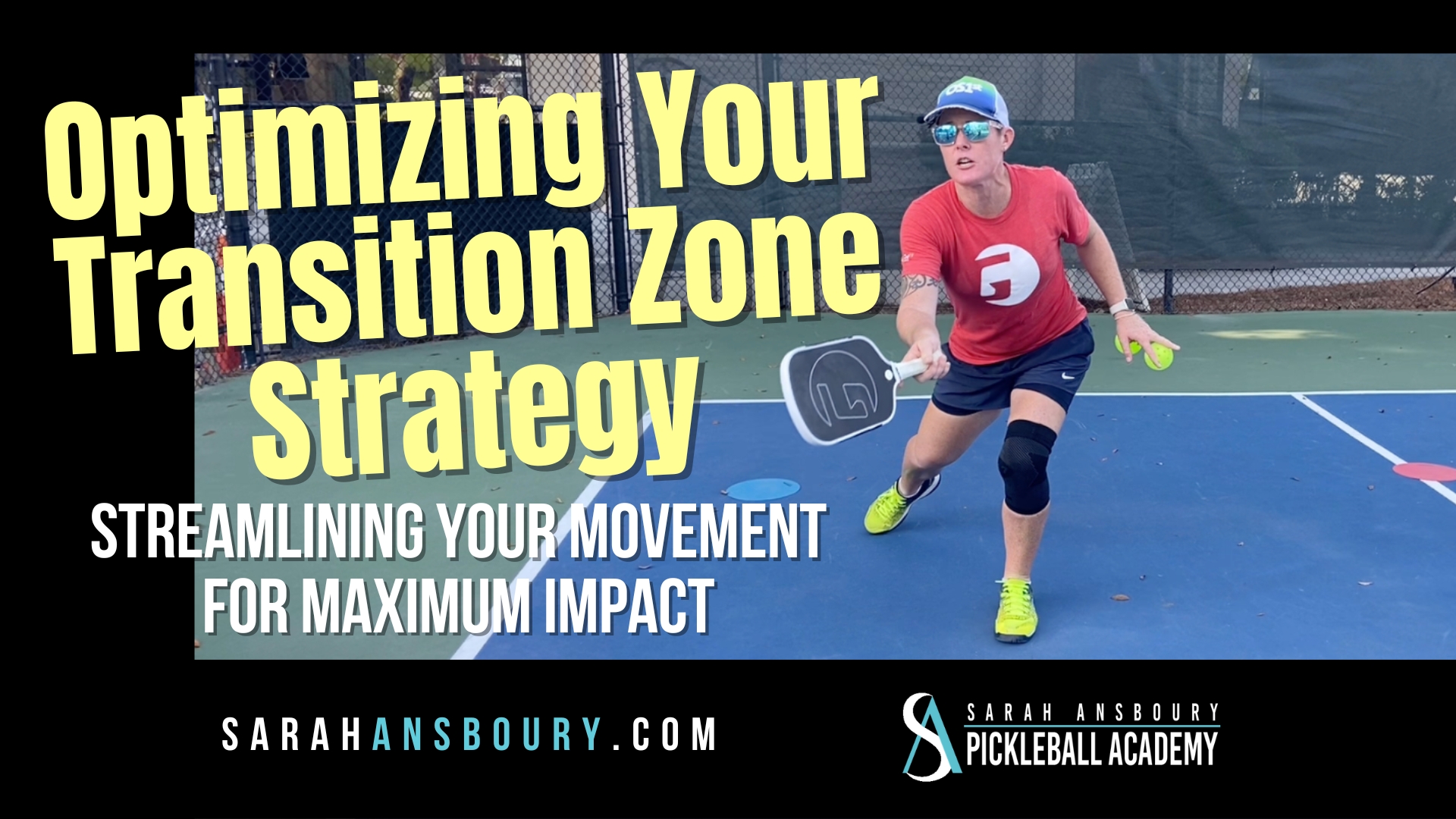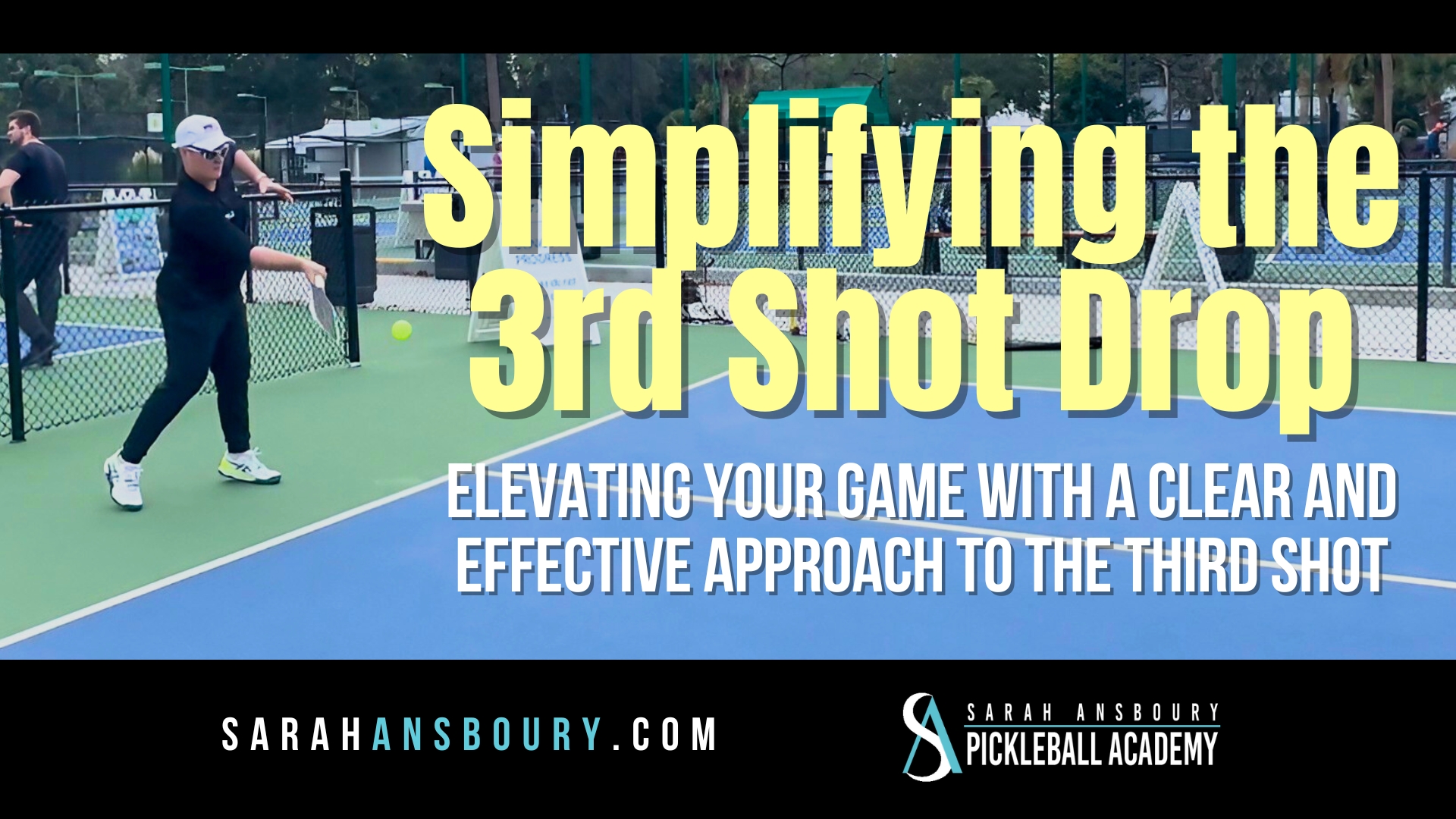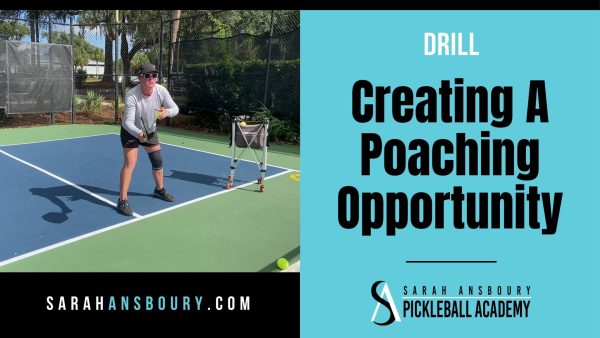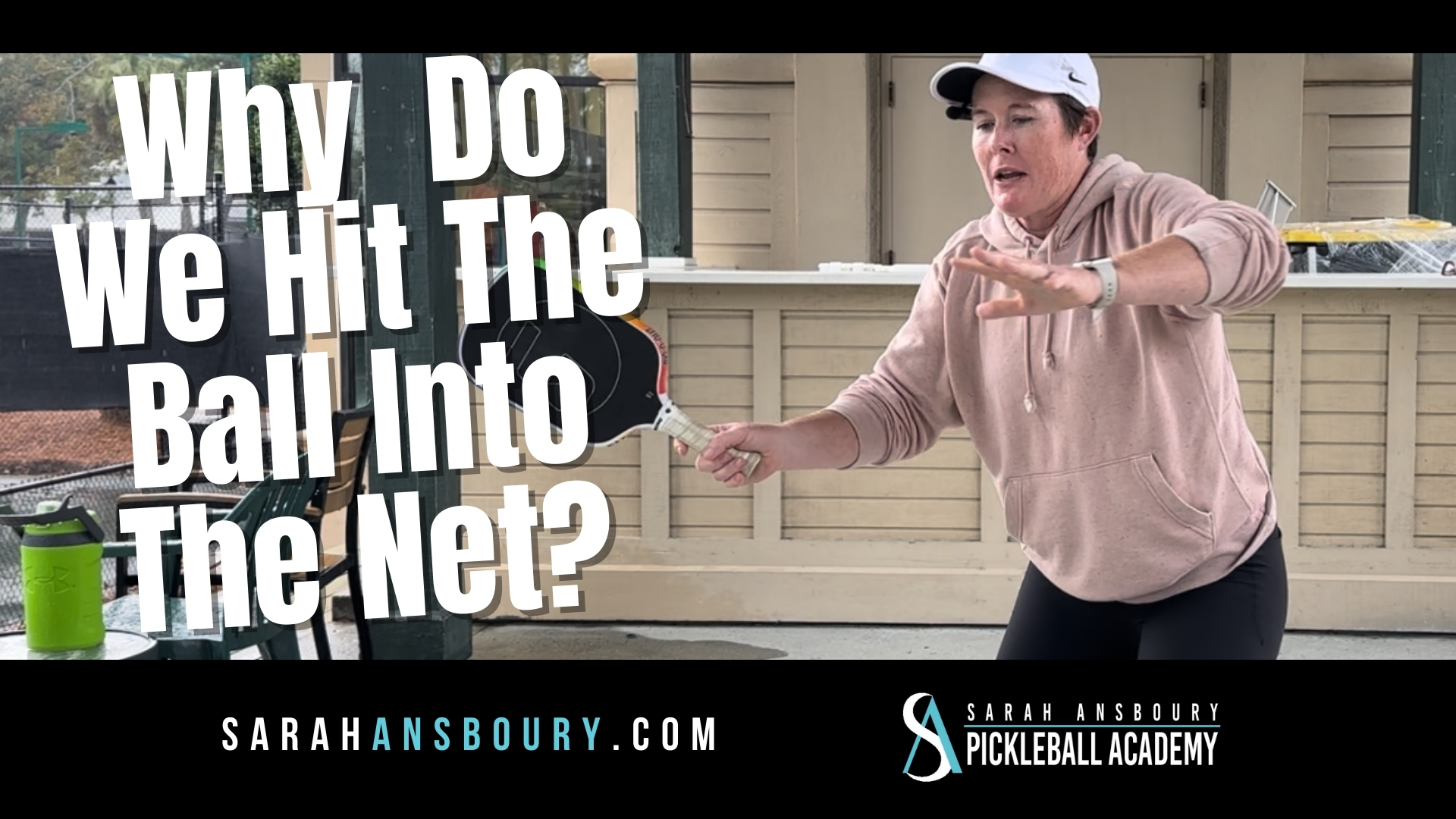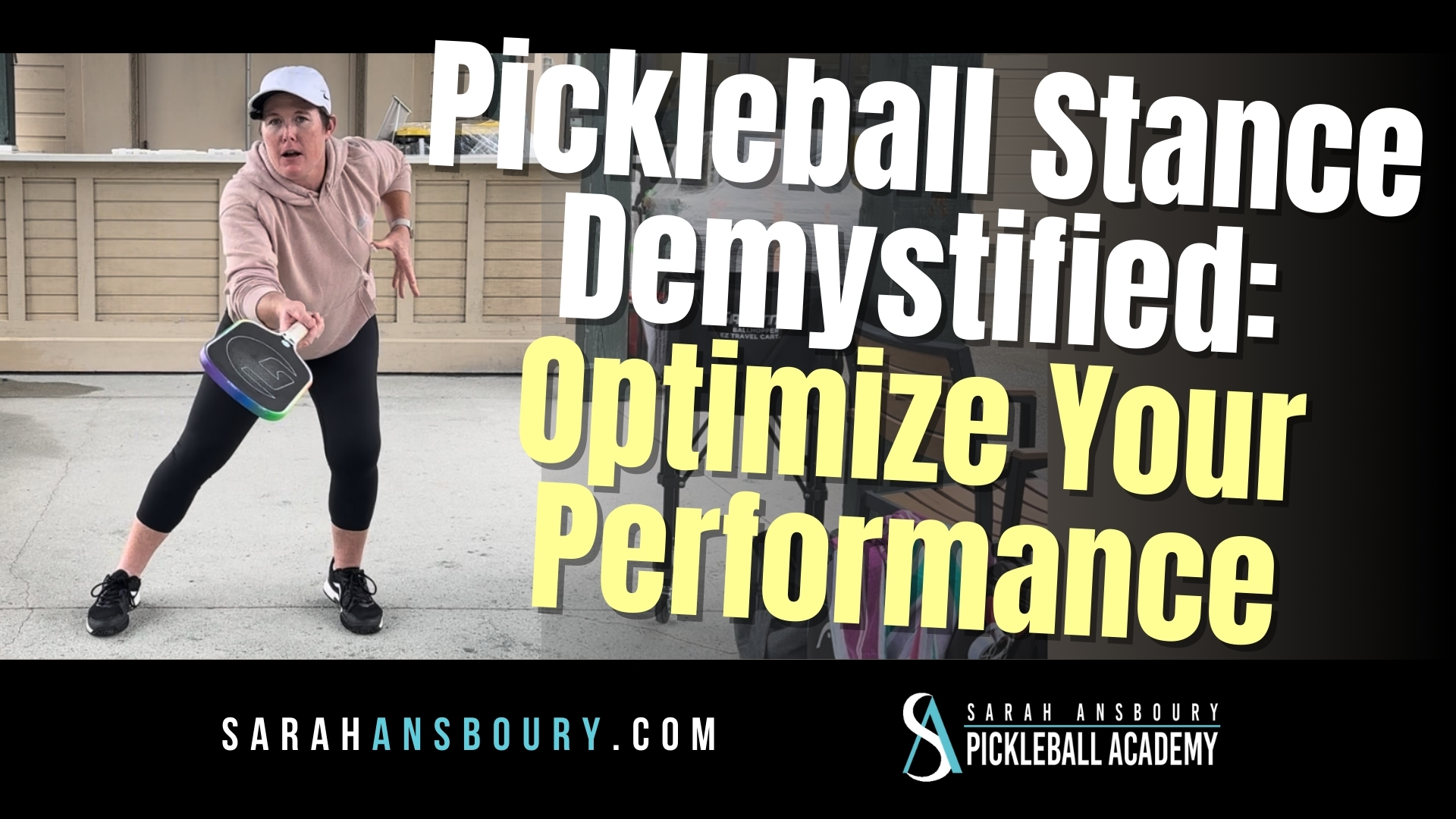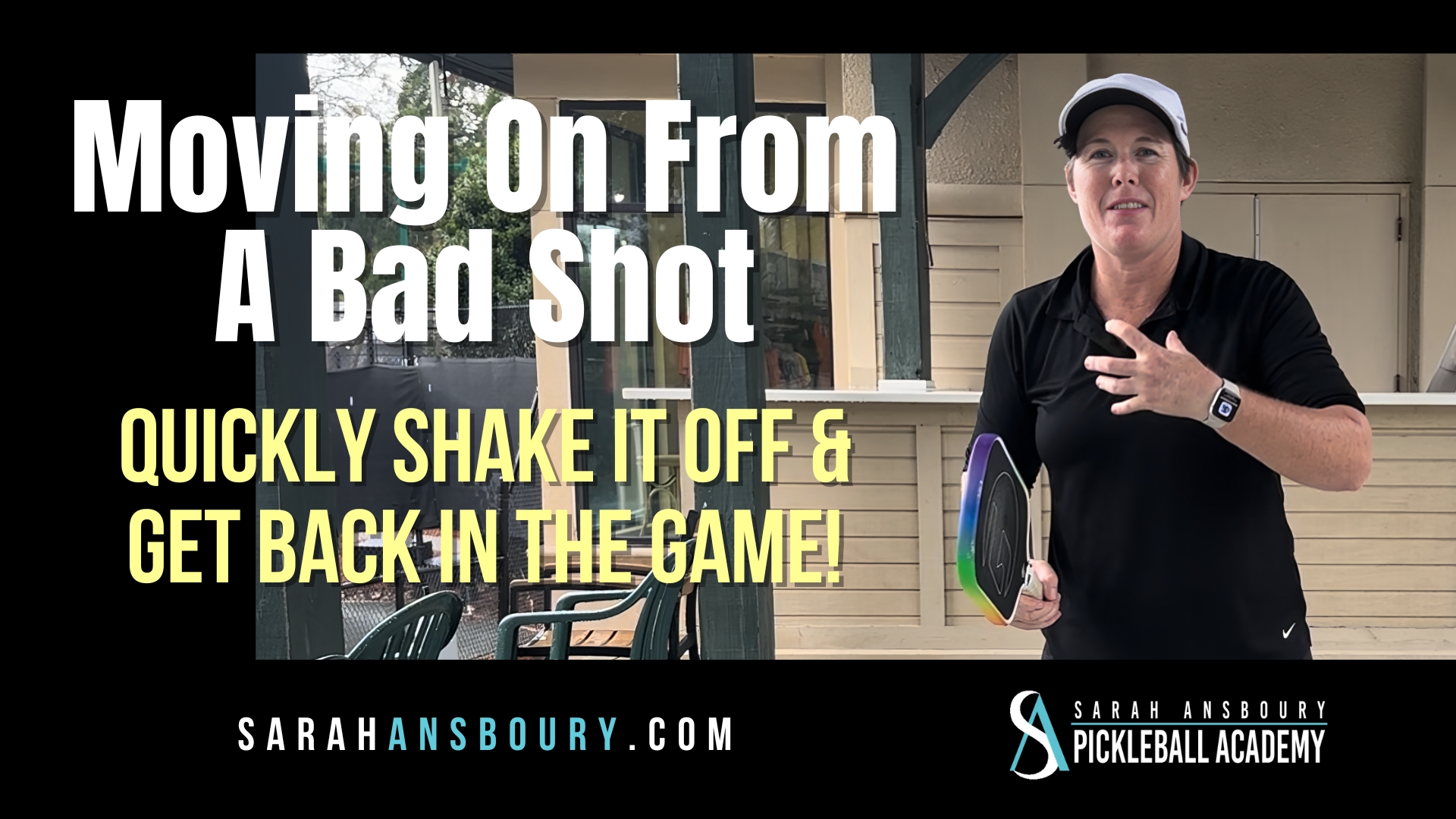I am certain at some point you have been told to keep your paddle up. Someone may have even whacked a ball at you to make the point. While we all know we should keep our paddle up, we don’t always do it. Rather than pointing out your mistake, I would rather teach you how to keep your paddle up!
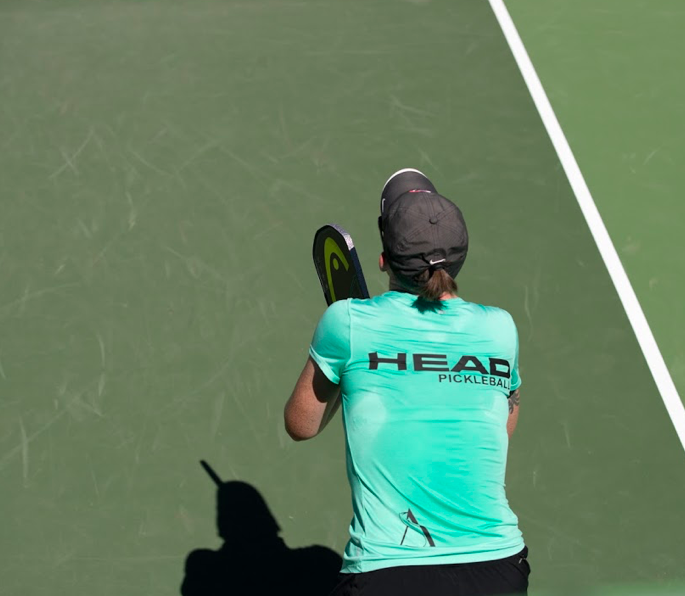
Instead of focusing on keeping your paddle up I want you to focus on two things: 1. Maintaining a neutral posture which faces the ball, and 2. Tracking the ball with your paddle. Let’s review each of these:
Your Neutral Position
Here is a picture of me in what I like to call my happy, neutral zone. You may have heard the term “ready position” or “compressed position”. You’ll notice that my feet are a bit wider than shoulder-width apart. You can’t see it here, but trust me I am not flat-footed. Ideally, I feel light and agile on the balls of my feet. I bend forward from my hips, not my waist. I keep my chest and head 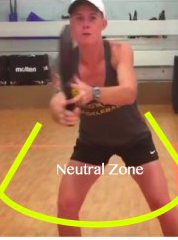 up. You’ll notice that I am holding the paddle in front of me at about chest height.
up. You’ll notice that I am holding the paddle in front of me at about chest height.
I should be maintaining this position whenever I am not running or hitting the ball. I call this the neutral zone because it allows us to move in either direction, side to side, or forward or back.
When you assume the neutral position, I want you to face the ball. I am not suggesting you turn your head, but rather you angle your body so that you are facing the ball. Imagine you were hitting a crosscourt dink. You wouldn’t stand square to the net and attempt to hit the dink across your body. Instead, you would angle your body so that you are facing where the ball is intended to go. After hitting the ball, return to your neutral position, angling your body in the direction the ball will be traveling to you.
Use Your Paddle as a Tracking Device
Now focus on using your paddle as a tracking device. Track the ball. I’m not suggesting you point at the ball….rather concentrate on keeping the paddle in front of the middle of your body. This will help you in two ways:
- By focusing on tracking the ball, you will actually be less likely to drop the paddle. In fact, when most people drop their paddle they lower it to their side. Simply focusing on keeping it up in the neutral position, tracking the ball, will improve your ability to keep the paddle up.
- Since your paddle, hand, arm, and body are all connected…when you shift to follow the ball, all your parts will move in unison. This will help you shift your weight enabling you to move more quickly but remain balanced. This, of course, makes it easier to maintain your range of motion while being aware of your neutral zone.
If you are in a neutral position, with your paddle in front of you tracking the ball, you will have room to attack when your opponent fails to keep their paddle up. Watch the video I created which discussed using your paddle to track the ball. I’m confident this will help you keep your paddle up!



